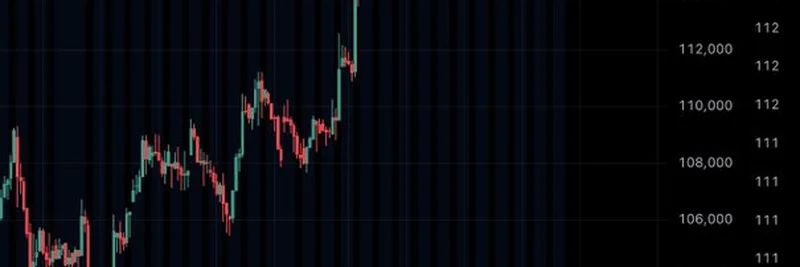If you’ve been diving into the wild world of cryptocurrency trading, you might have come across the term "CME Gap" and wondered what it’s all about. Recently, a tweet from MartyParty broke down this concept in a way that’s got the crypto community buzzing. Let’s unpack it step by step, keeping it simple and engaging, so you can understand how this phenomenon affects Bitcoin and beyond.
What Is the CME Gap?
The CME Gap refers to a price discrepancy that pops up in Bitcoin futures traded on the Chicago Mercantile Exchange (CME), one of the biggest regulated futures exchanges globally. Unlike the 24/7 crypto market, CME operates on a schedule tied to New York stock market hours—Sunday through Friday, 6 p.m. to 6 p.m. EST. When the market closes on Friday and reopens on Sunday, Bitcoin’s price can shift due to trading on unregulated platforms like Binance or semi-regulated ones like Coinbase. This creates a "gap" on the chart, as seen in the image below.
In the chart, the green arrow highlights the gap between $114,300 and $115,680, a zone where the price jumped over the weekend. This gap happens because the CME doesn’t reflect the nonstop action of the broader crypto market during its downtime.
Why Does the CME Gap Matter?
Here’s where it gets interesting: traders often believe these gaps tend to get "filled" eventually. This means the price might swing back to cover that missing range, sometimes due to market manipulation by big players. MartyParty’s tweet points out that on July 25, 2025, the price hit $115,300—the top of the gap—but strong buying pressure stopped it from filling completely. This tug-of-war between buyers and manipulators is a big deal for traders watching the market.
The idea is that institutional traders or "whales" might push the price to fill the gap, especially around the Sunday reopen. However, as Marty notes, the defense of this gap was "impressively bullish," suggesting strong support from buyers who didn’t let it drop.
How Does This Tie to Meme Tokens and Broader Crypto?
While the tweet focuses on Bitcoin, the CME Gap concept can ripple through the crypto world, including meme tokens. These tokens, often driven by community hype and volatility (think Dogecoin or Shiba Inu), can also be influenced by broader market movements. If Bitcoin’s price action shifts due to a CME Gap, it can set off reactions in altcoins and meme tokens, especially during low-liquidity weekend hours.
For blockchain practitioners, understanding these gaps can help you spot trading opportunities or avoid pitfalls. Marty’s insight that the gap might be targeted again at $114,300 gives a heads-up to watch those levels closely.
The Bigger Picture: Regulation and Future Changes
The CME has announced plans to move to 24/7 trading, which could eventually eliminate these gaps. Until then, they remain a quirky feature of crypto trading. This highlights the ongoing tension between regulated and unregulated markets—a hot topic for anyone in the blockchain space. Keeping an eye on updates from CME Group can give you a leg up on how this might evolve.
Final Thoughts
The CME Gap is a fascinating peek into how traditional finance and crypto intersect. MartyParty’s analysis, backed by that eye-catching chart, shows how traders navigate these price anomalies. Whether you’re a Bitcoin enthusiast or a meme token trader, understanding these dynamics can sharpen your strategy. Stay tuned to meme-insider.com for more breakdowns like this, and let us know your thoughts in the comments!




